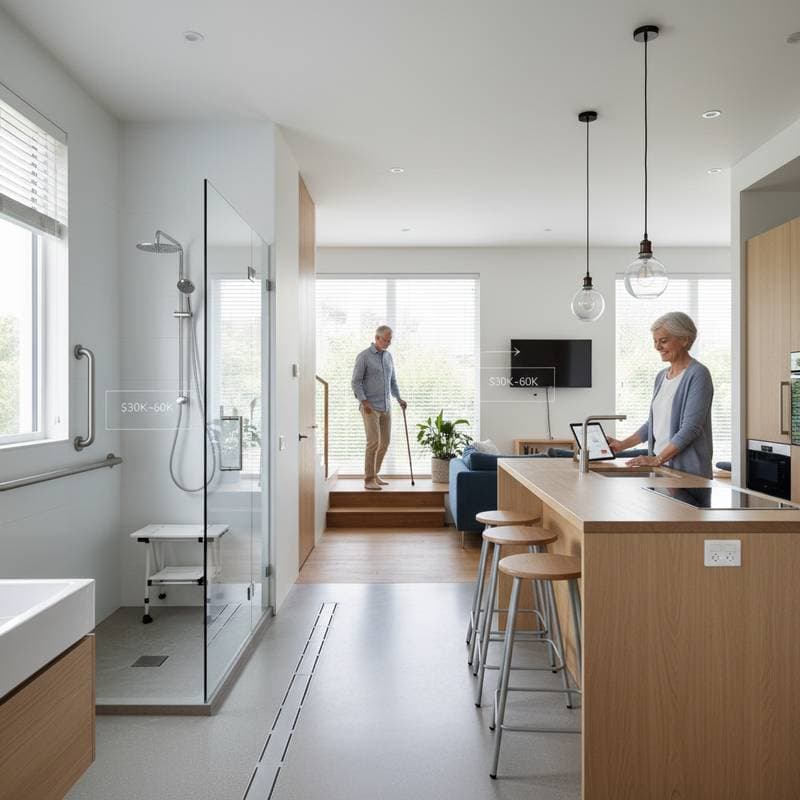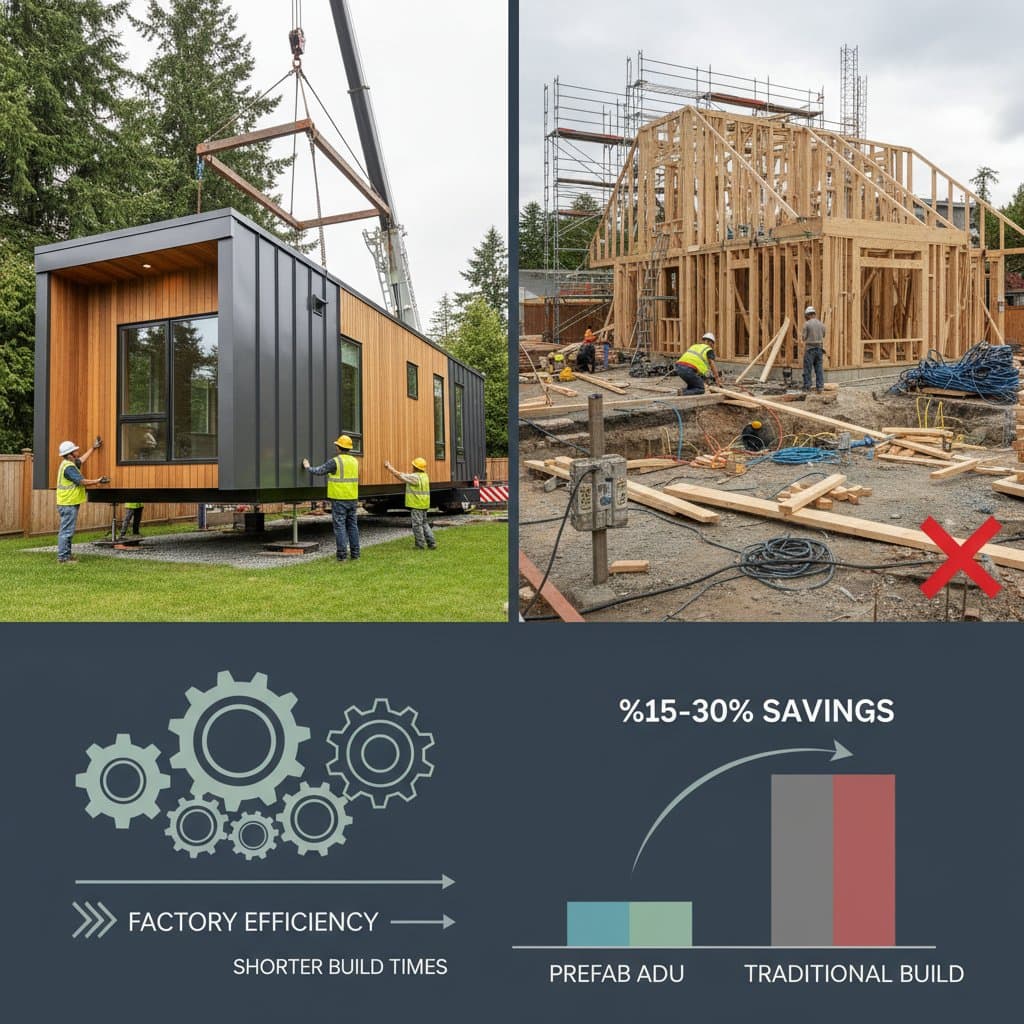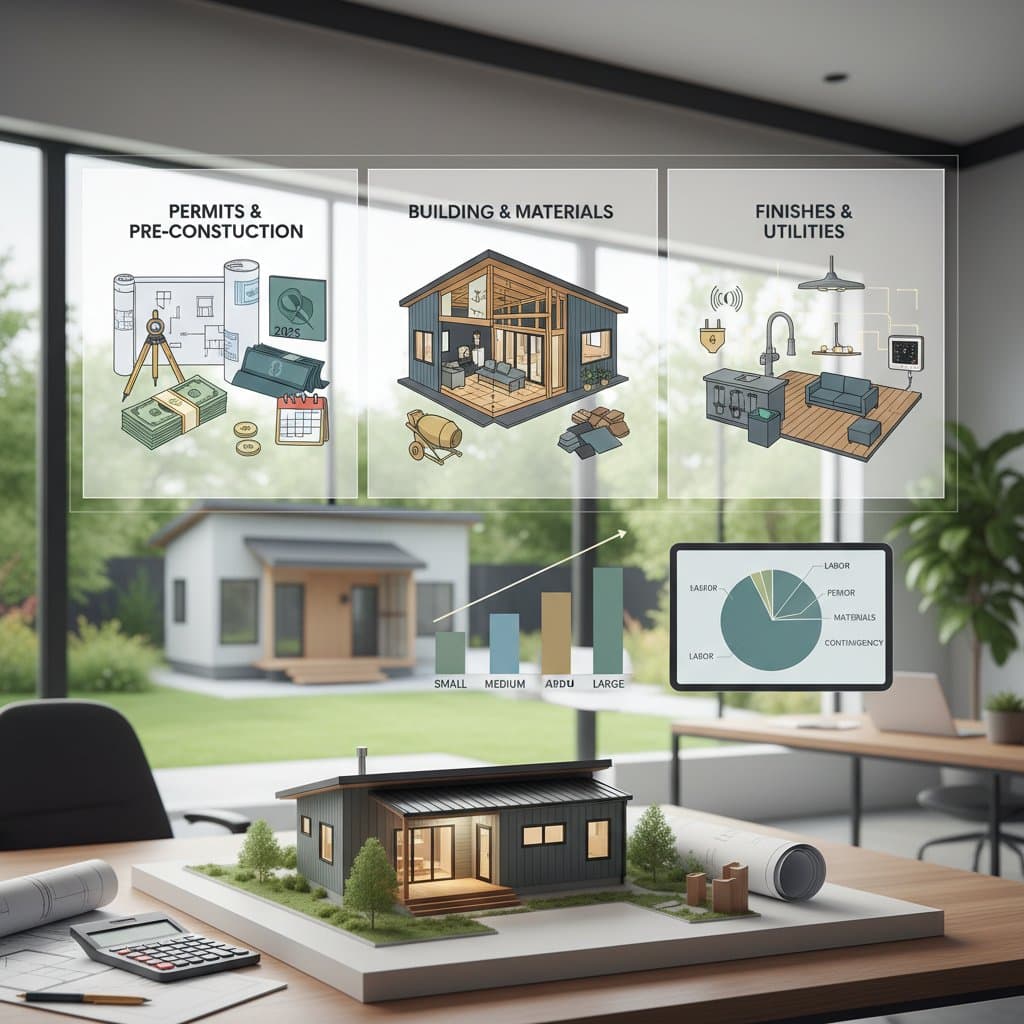Understanding Prefab ADUs in 2025
Prefab accessory dwelling units (ADUs) represent a smart solution for expanding living space without the hassles of traditional construction. These factory-built structures arrive on-site nearly complete, allowing for faster assembly and reduced disruption. In 2025, costs have dropped significantly, making them accessible for homeowners seeking rental income, guest accommodations, or personal retreats.
The appeal lies in their efficiency. Manufacturers streamline production, cutting labor and material waste. Homeowners benefit from customizable designs that fit urban lots or rural properties alike.
Breaking Down the Costs
Entry-level prefab ADUs in 2025 begin at $140,000 for a basic 400-square-foot unit with standard finishes. Prices climb to $320,000 for larger models exceeding 800 square feet, incorporating premium features like energy-efficient windows or smart home integrations. These figures include the base structure, delivery, and foundational setup but exclude site-specific preparations.
Several elements influence the final price. Size remains the primary driver; each additional 100 square feet adds approximately $20,000 to $30,000. Material choices, such as opting for durable fiber cement siding over basic vinyl, can increase costs by 10 to 15 percent. Location matters too, with urban areas demanding higher fees for crane access or utility connections.
Site conditions play a crucial role. Flat, accessible lots keep expenses low, while sloped terrain or tree removal might add $10,000 or more. Always factor in local zoning requirements, which could necessitate engineering adjustments.
Timelines for Completion
Prefab ADUs offer a clear advantage in speed. From order to occupancy, expect three to six months total. Factory production takes four to eight weeks, followed by one to two weeks for on-site assembly.
Delays often stem from permitting processes, which vary by municipality. Some areas approve plans in two weeks; others require up to eight. Coordinate early with local authorities to align your schedule.
Weather impacts outdoor work minimally due to the prefab approach. Indoor finishing, like painting or flooring installation, proceeds quickly once the shell arrives. Professional crews complete these steps in days, not weeks.
Key Factors Shaping Your Project
Design selections directly affect both cost and functionality. Choose open floor plans for better flow in smaller units, or add lofts for extra sleeping areas. Energy-efficient appliances and insulation not only raise initial outlay but lower long-term utility bills by 20 to 30 percent.
Utility connections demand careful planning. Extending water, sewer, and electrical lines costs $5,000 to $15,000, depending on distance from the main house. Solar panel additions, increasingly popular in 2025, provide payback through incentives and reduced energy dependence.
Zoning and permits form the foundation of success. Research setbacks, height limits, and occupancy rules before purchasing. Non-compliance leads to redesigns or denials, inflating budgets unexpectedly.
Strategies for Cost Savings
Select modular designs over custom builds to shave 15 to 25 percent off prices. Standardized components reduce manufacturing time and errors. Partner with manufacturers offering bundle deals that include delivery and basic foundation work.
Shop for financing options tailored to ADUs. Some lenders provide home equity loans with rates under 5 percent in 2025, easing upfront payments. Explore grants for eco-friendly features, such as those promoting sustainable materials.
Compare contractors through detailed bids. Request breakdowns covering labor, materials, and contingencies. This transparency prevents surprises and ensures competitive pricing.
Navigating Permits and Installation
Securing permits requires submitting detailed plans, including structural engineering reports and environmental impact assessments. Local building departments review these for compliance with seismic, fire, and accessibility standards. Engage a permit expediter if your area has complex rules; they handle paperwork for a fee of $1,000 to $3,000.
Professional installation proves essential. Certified contractors manage foundation pouring, crane placement, and anchoring to withstand winds or earthquakes. They also coordinate inspections at key stages, ensuring code adherence.
Attempting to manage these without permits risks costly delays or fines. Contractors bring experience navigating local codes and utility coordination, which can shorten your overall timeline.
While hiring a pro raises upfront cost, it often prevents expensive mistakes. The average homeowner saves little attempting to self-manage prefab installation once hidden permitting and inspection steps are factored in.
Protecting Your Long-Term Value
After installation, focus on preventive maintenance to keep your prefab ADU performing well. Clean gutters twice yearly to prevent water damage. Check caulking around windows and doors annually, resealing as needed to maintain weatherproofing.
Inspect the roofing every season for loose shingles or debris buildup. Schedule professional HVAC servicing yearly to optimize efficiency and catch issues early. These habits extend the unit's lifespan beyond 50 years.
Keep detailed records of permits, warranties, and maintenance logs. Such documentation supports resale value and simplifies future upgrades. If renting the unit, budget for periodic refreshes such as repainting every five years or appliance replacement every decade.
Realizing the Full Potential
Prefab ADUs can serve as rental units, guest spaces, or retirement options for decades. Rental yields often reach 8 to 12 percent annually in high-demand areas, boosting property equity. Guests enjoy private retreats, enhancing family gatherings.
For aging in place, adaptable designs accommodate mobility aids or home offices. With thorough planning, accurate budgeting, and professional guidance, you can turn a backyard idea into a dependable addition that strengthens both property value and daily living flexibility.








